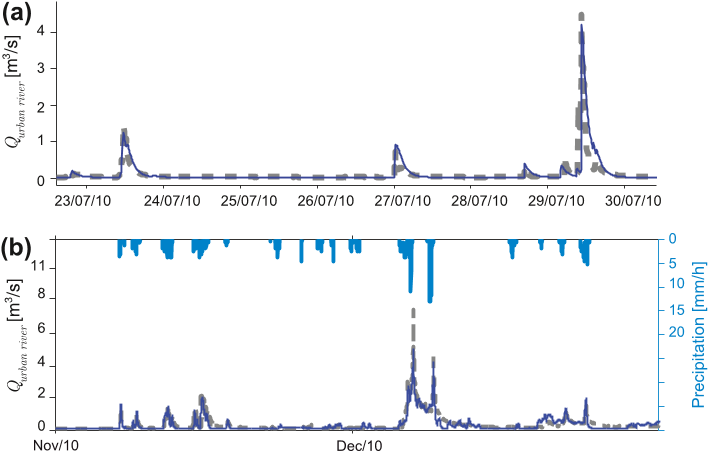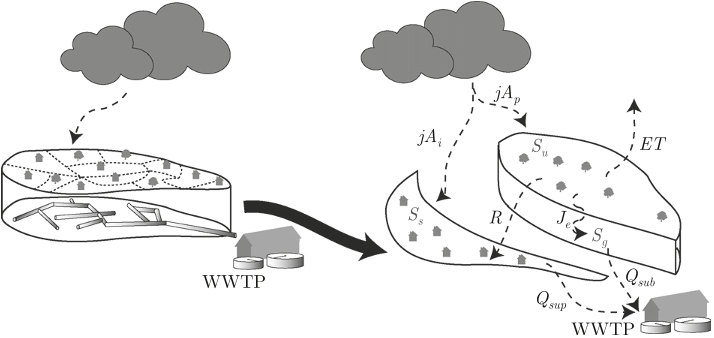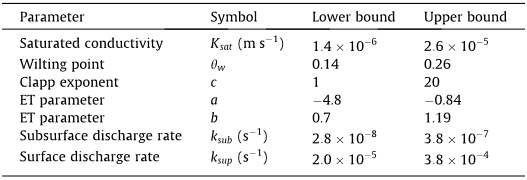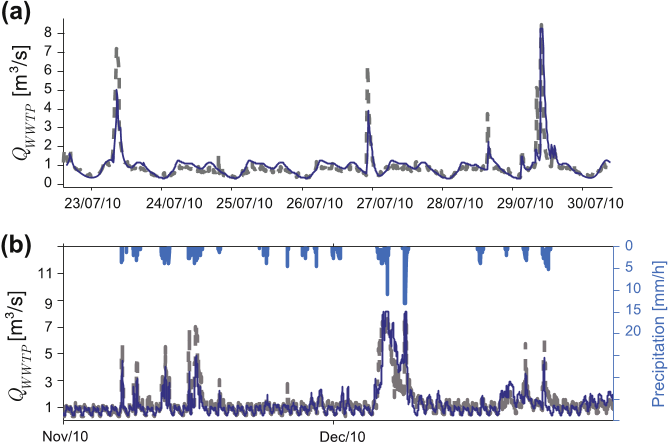Q2. What are the two important assumptions that can be used to simplify sewer hydrologic/hydraulic?
Two important modeling assumptions are: (i) the pipe network is replaced by an underground impervious area and thus overland flow and pipe discharge can be together modeled as a fast discharge linear reservoir, and (ii) the water diverted out of the sewer system through the different CSOs can be combined together through the hydraulic discharge function of a representative CSO.
Q3. What is the common urban hydrological model used in research and engineering?
Most popular urban hydrological models used in research and engineering (e.g., MOUSE (Hernebring et al., 2002), SWMM3) are spatially distributed with link-node drainage networks.
Q4. What is the purpose of the study?
In this study, a hierarchical physically based storage and transmission model was designed as an alternative means for simulating continuous flow dynamics in complex engineered urban basins.
Q5. What is the purpose of the model?
In addition, the hydrological model integrates functions that aim to reproduce characteristic daily variations of dry weather flow to the WWTP.
Q6. Why is detailed modeling of drainage systems often deemed necessary?
Detailed modeling of drainage systems is often deemed necessary because of the complexity of flow paths in urban catchments (Cantone and Schmid, 2011; Gironás et al., 2009).
Q7. What is the type of precipitation determined by the model?
The type of precipitation is determined based on a temperature threshold (DeWalle and Rango, 2008; Schaefli et al., 2005): when T is above the threshold Tcr , precipitation occurs as rain, otherwise precipitation is frozen.
Q8. What is the closest CSO to the WWTP?
This CSO, the closest CSO to the WWTP, is responsible for more than a third of all CSO discharge, and is typically the first to become operational in storms (e-dric.ch, 2008).
Q9. What is the model’s function for determining discharges at the WWTP inlet?
During dry weather, discharges arriving at the WWTP inlet are determined mainly by two phenomena: (i) infiltration of groundwater into the pipe network (see Section 2.2 and Dupont et al. (2006); Göbel et al. (2004)) and, (ii) water use and consequent wastewater production.
Q10. What is the definition of a typical urban catchment?
It is a typical urban catchment, where much water comes from toilets, washing, industry and other uses, rather than directly from natural sources.
Q11. What is the effect of the infiltration excess on the model?
Saturation excess was not implemented in their modeling scheme as the authors considered an unlimited reservoir height – i.e., the reservoir is never full – and this could lead to underestimation of surface runoff (Buda et al., 2009; MartínezMena et al., 1998; Nachabe et al., 1997).









